The following is a guest post from our friends at Laptop Ninja. Enjoy!
Virtual reality has made tremendous gains in recent years, thanks to crucial contributions from the manufacturers and developers involved. Among the players that have done the most to propel the technology forward are Oculus and HTC, whose headsets are built specifically for those with a thirst for the best of VR.
Buying either the Oculus Rift or the HTC Vive will require you to dig deep into your wallet, but if you’re hell-bent on experiencing top-quality virtual reality on your PC or laptop, they’re a worthy investment.
However, choosing which of the two remarkable headsets to buy can be challenging. And, to make the decision even tougher, both companies have been consistently introducing new controllers and games in a bid to stay ahead of the competition.
Therefore, if you’re aching for some VR goodness and have no idea what headset to get, you’re not alone. Many gamers, professionals, and enthusiasts are juggling the Oculus Rift on one hand and the HTC Vive on the other, with no idea what to take home.
Lucky for you, we’ve whipped up a thorough comparison that pits the two headsets against each other to help you wrap your head around them, and possibly make a more informed decision.
Want to learn more about the Oculus Rift and the HTC Vive? Read on, below.
Oculus Rift vs. HTC Vive: Overview
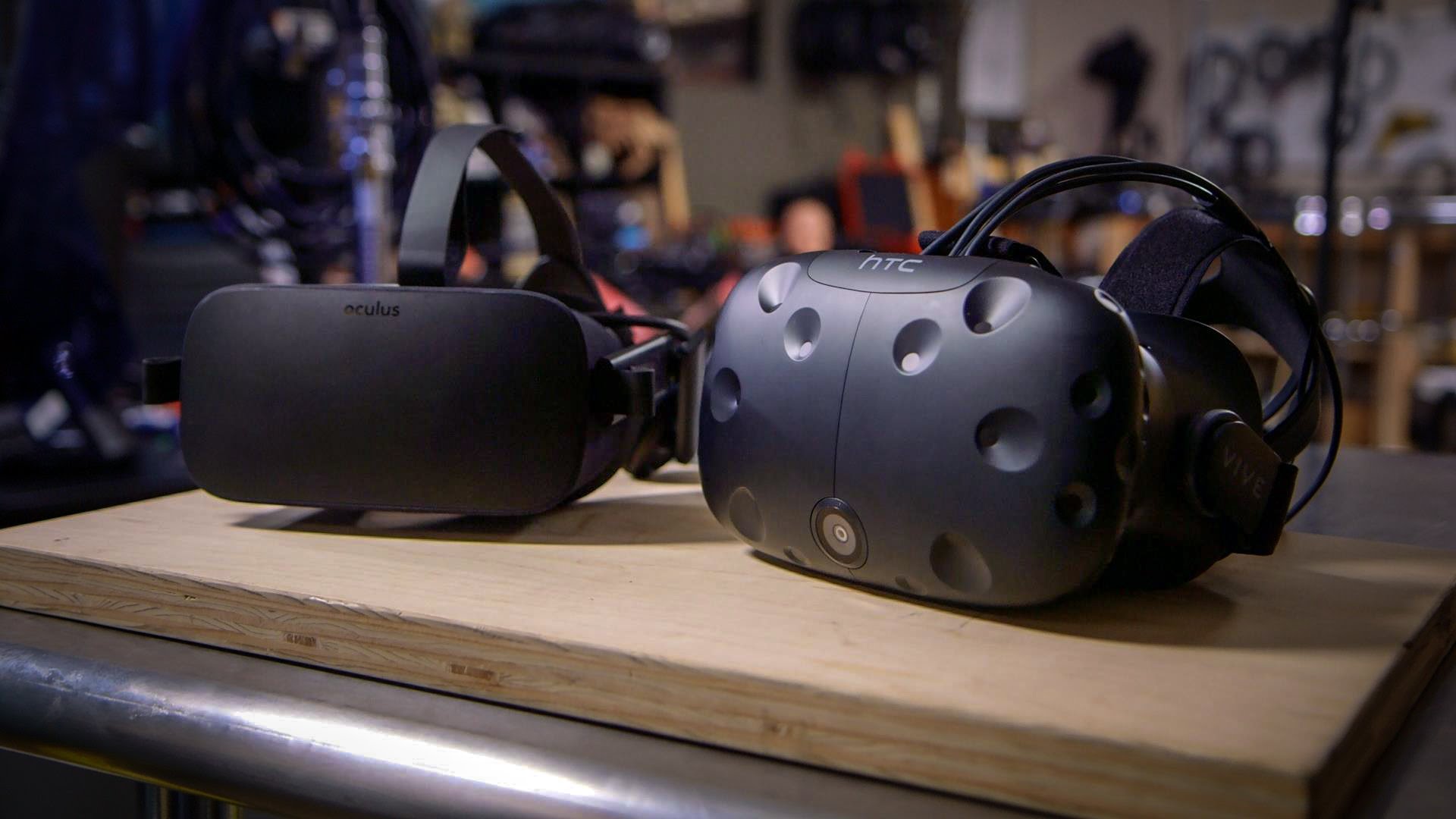
The Rift project started as an ordinary Kickstarter campaign from a little-known company, Oculus VR, in 2012. The campaign was a huge success, and two years later, Facebook purchased the company for $2 billion. Today, Oculus has grown from a small player to one of the top brands in the virtual reality scene.
The HTC Vive, on the other hand, comes from the collaboration of two well-known companies, one famous for its hardware and the other for its software. HTC is a veteran mobile phone and tablet manufacturer while Valve, is a reputed name among gamers, particularly for its many acclaimed video games and Steam – a digital distribution platform for PC titles.
With the Vive, therefore, comes the best that both HTC and Valve have to offer. This means a combination of premium-grade hardware and seamless software integration that will undoubtedly make your virtual reality experience a delight. But don’t toss the Oculus Rift aside yet, as it too has a few tricks up its sleeve.
Oculus Rift vs. HTC Vive: Design
As with all current VR headsets, both Oculus and HTC have opted for the traditional but practical “ski-mask” approach. However, that’s where the similarities seem to end, as the two headsets take relatively different paths to reach the same end.
The Rift is admirably more refined and compact than the Vive. Despite packing its own headphones, it weighs just 16 ounces, four ounces lighter than its rival. The headphones are of course removable, and you can swap them out for a $49 pair of earphones, also from Oculus.
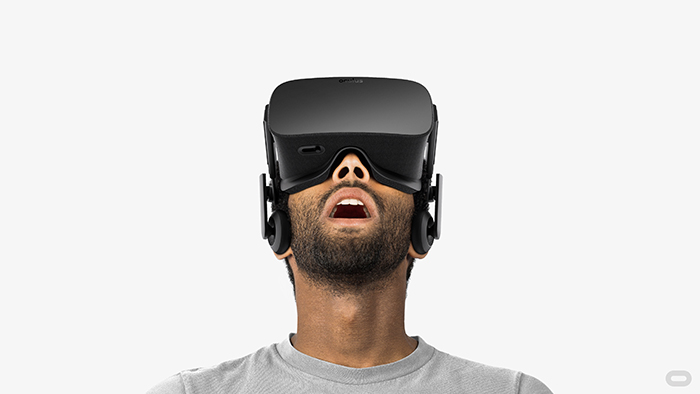
While you do get more sensors with the Vive, it’s noticeably larger than the Rift. Its size is further increased by the puffier spongy material that outlines the headset to block out outside light. Other useful touches include a knob that adjusts the distance between the lenses and your face to accommodate glasses, as well as an in-house Bluetooth module that lets you connect to your phone to answer calls and messages while in the virtual realm.
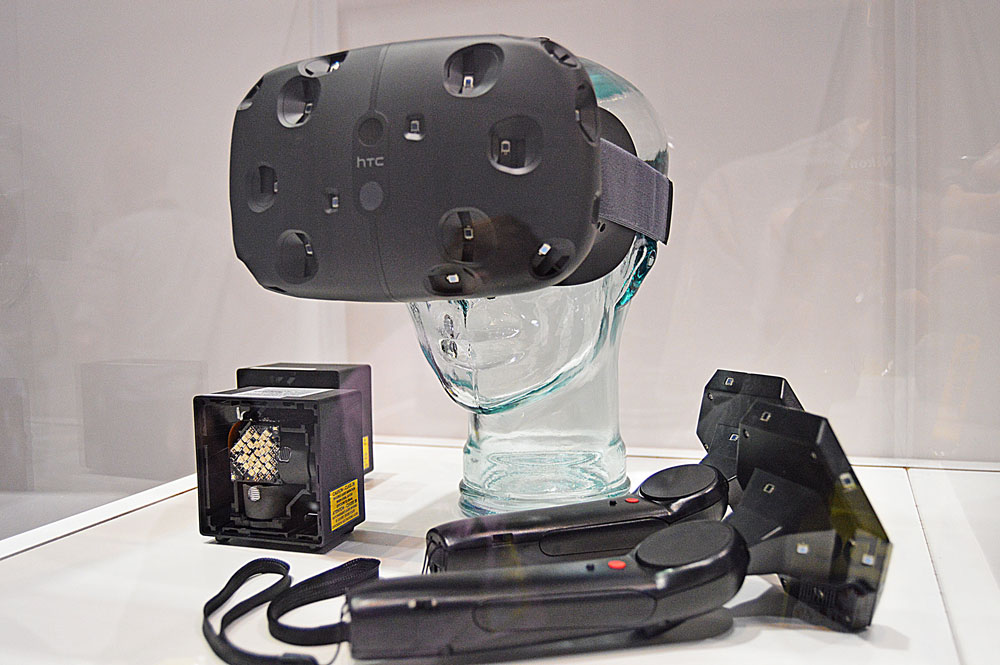
So, there’s really no winning with these two headsets when it comes to design. Although the Oculus Rift looks and feels better on the face, the Vive is more adaptable and equipped. Nevertheless, if comfort is your utmost priority, the lightweight Rift is unquestionably the better option.
Oculus Rift vs. HTC Vive: Hardware
Essentially two arrays of cleverly arranged lenses, both headsets offer a 1080 x 1200-pixel resolution display per eye with a 90Hz refresh rate and a wide 110-degree field of view, which causes the virtual reality world to seem like it’s indeed wrapping around your head.
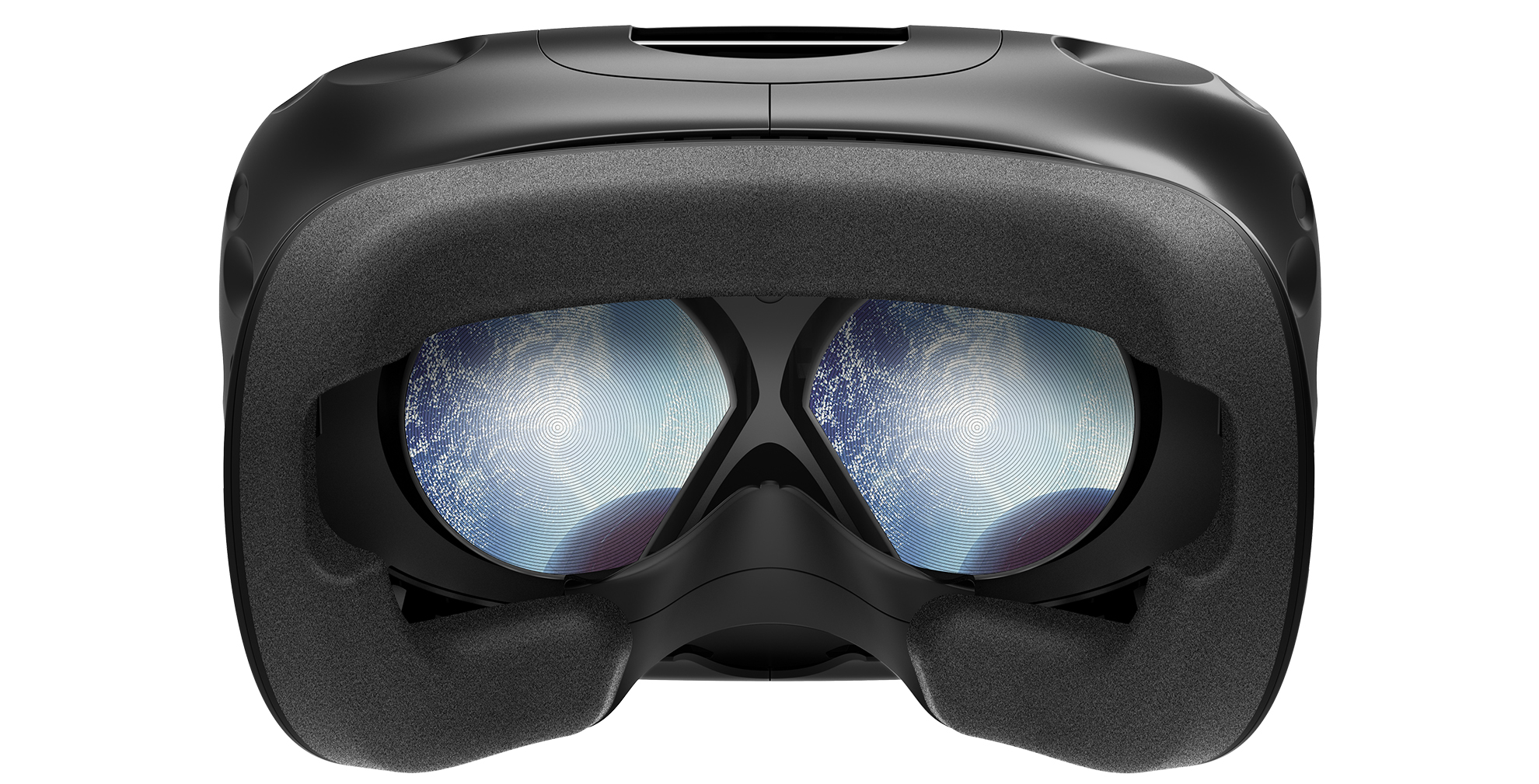
Both the Rift and the Vive rely on cables to interface with the computer, which means you won’t be able to walk around as freely as you would with a mobile VR headset like the Samsung Gear VR. A wireless dongle for the Vive is however in the works to provide a tether-less high-end PC virtual reality experience.
To fuel the Vive’s campaign, even more, is its front-facing camera, which allows for a safety system that warns you when you get too close to physical objects by casting a blue outline on your field of view. With the safety system, gamers and explorers can walk freely within the 15 x 15 feet tracking space served up by the Vive’s two “lighthouse” stations, without the worry of tripping on cables or bumping into walls.

The Rift doesn’t have a front camera, but you can buy a $59 sensor that works about the same way as the Vive’s room-scale VR. With all accessories bundled, the Oculus Rift totals to a price tag of around $880, $80 more than the HTC Vive bundle.
Oculus Rift vs. HTC Vive: Controllers
Stepping into the virtual world of a VR ready game is thrilling enough, but it takes the experience to a whole other level when you can interact with the environment.
For the better part of last year, the HTC Vive held a formidable edge over the Oculus Rift, mainly because the latter’s Xbox One gamepad was no match for the more hands-on wands that came with the former.
The long-awaited Oculus Touch controllers finally arrived in December, and it didn’t take long for the tide to shift in the Rift’s favor. The Oculus Touch set feels better in hand, especially for immersive fast-paced gaming. Regardless, the Vive’s wands remain popular among graphic designers and 3D painters.
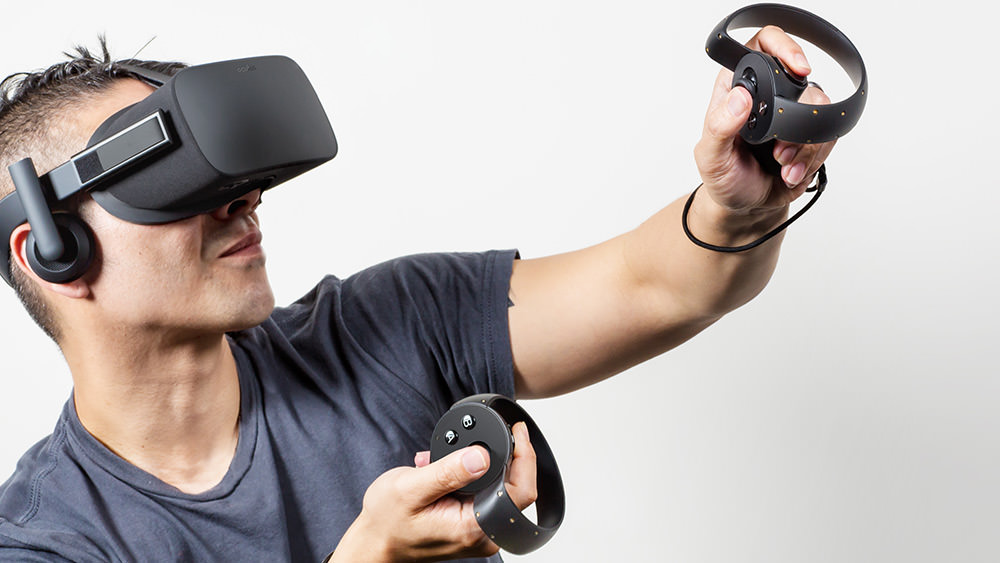
That said, making virtual reality a tangible experience is still far from seamless, and both HTC and Oculus are working to improve their offerings further. Perhaps the next phase of the technology will involve touch- and motion-sensitive fingertip sensors for an even more natural feel.
Oculus Rift vs. HTC Vive: Content
In addition to the leaps in hardware, virtual reality has also seen remarkable progress in the software department. However, there’s no denying that the Vive has quite the ground to cover to match the content offered by the Rift. Oculus unveiled its headset with 30 launch games last year, and the number has since risen exponentially.
Every buyer of the Rift currently takes home two of the best pack-in games: a mascot platforming game called Lucky’s Tale and the acclaimed space shooter, Eve: Valkyrie. Other notable titles available for the Oculus include Chronos, Radial-G: Racing Revolved, and Star Trek: Bridge Crew.
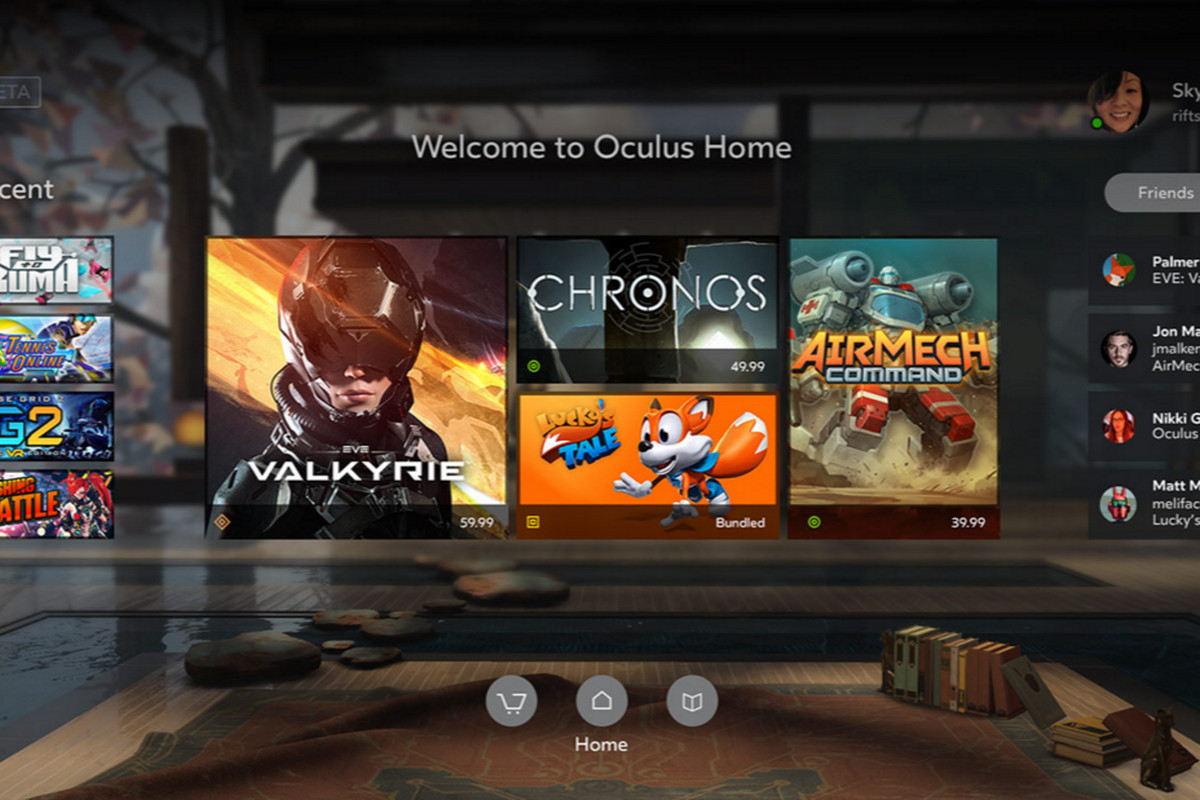
In comparison, the HTC Vive had some 50 launch window games, but the lineup wasn’t as striking as with the Rift. This is, however, set to change given the headset’s native steam support and the growing community of VR developers.
Oculus Rift vs. HTC Vive: Price
The Rift and the Vive are the two best VR headsets on the market, so be prepared to spend a good amount of money.
With its price set at $799, the HTC Vive is the more expensive of the two. Thankfully, you get everything you need in the bundle, including the two Lighthouse sensors and the wands. Customers in the US and UK can also purchase the Vive for a reasonable monthly subscription cost.
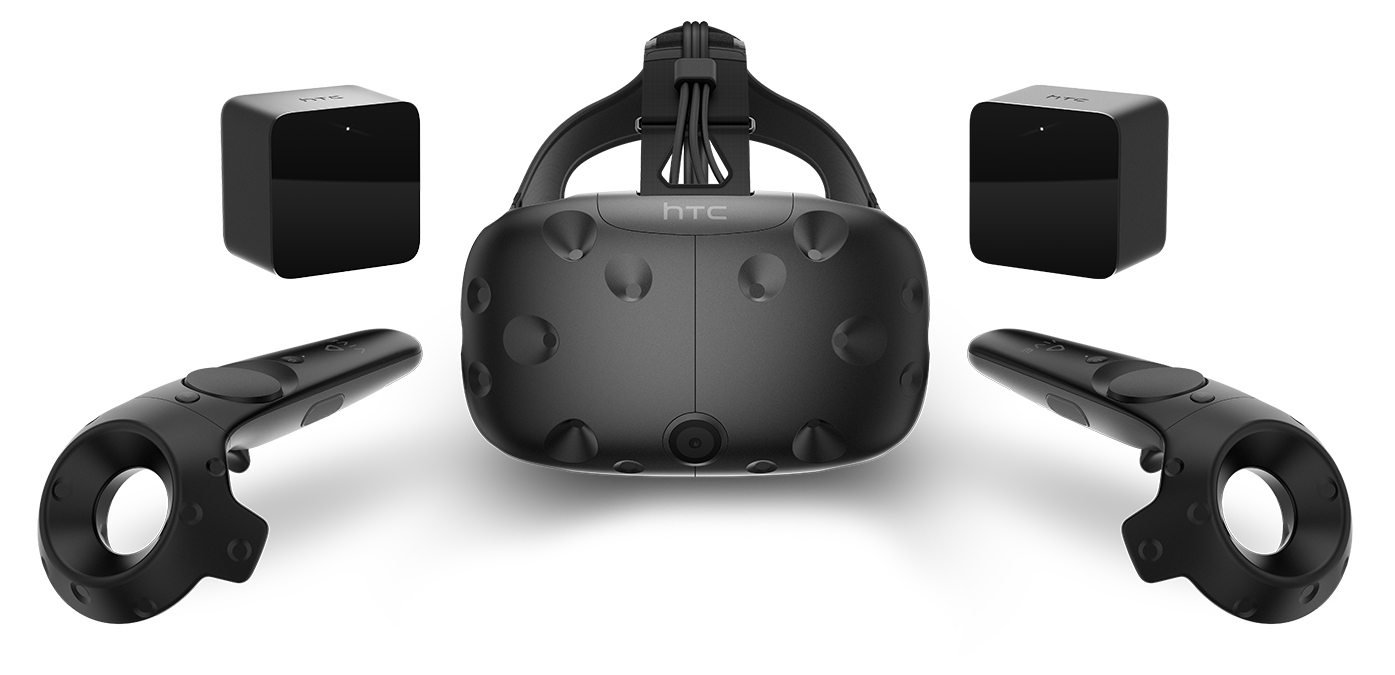
The Oculus Rift, meanwhile, is priced at $600. For a comprehensive experience, however, you’ll need to shell out an extra $200 for the Oculus Touch controllers and a further $79 for the additional room-scale sensor, which drives the total cost above that of the Vive.
But the price difference is insignificant if you consider the extra cost of a VR-ready high end gaming laptop or PC such as the Signature 17, or the new AMD Ryzen powered Raptor M60 configured with a VR approved GTX 980M or GTX 1070, which you’ll need to experience playable framerates with either headset. Virtual reality may be exciting, but until a price drop happens, it will remain nothing more than a fantasy for most people.
On the bright side, the latest reports indicate an upcoming pair of lenses called aGlass, which could reduce the system requirements for the HTC Vive down to run on less powerful laptops such as the razor thin Raptor MX50 or Raptor MX40, bringing down the cost of a capable gaming PC substantially.
Final Thoughts
Comparing the HTC Vive and the Oculus Rift means going into quite a lot. Nonetheless, it’s perhaps worth keeping in mind that either headset will get you a thoroughly impressive feel of gaming, exploring and creating in virtual reality.
While Oculus excels in its comfortable design, handy controllers and extensive content, HTC wins with better room-scaling and a cheaper all-inclusive bundle. Therefore, the headset you choose will ultimately depend on your budget restrictions and the immersive games you wish to play. Besides, virtual reality technology is evolving rapidly. One can never know what tomorrow will bring.
Vigilance Chari
Latest posts by Vigilance Chari (see all)
- Oculus Rift vs. HTC Vive: Which is Which? - June 9, 2017
Rift is my choice.
Good old days 🙂 6 months later and with all those Windows Mixed Reality headsets on the market, it’s much harder to answer which one is the one …
Rift Is great no doubt would love to compare with google VR sets though !